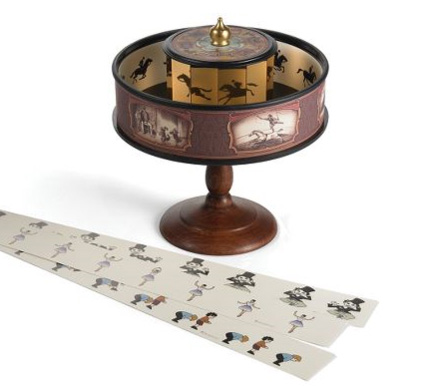Charles-Emile Reynaud (1844 – 1918) was a Frenchman, who developed a technical understanding of visual science as photographer’s apprentice.
In 1877, he developed the praxinoscope – the successor to the zoetrope. It used a strip of pictures placed around the inner surface of a spinning cylinder. The praxinoscope improved on the zoetrope by replacing its narrow viewing slits with an inner circle of mirrors, placed so that the reflections of the pictures appeared more or less stationary in position as the wheel turned. Someone looking in the mirrors would therefore see a rapid succession of images producing the illusion of motion, with a brighter and less distorted picture than the zoetrope offered, as with the zoetrop one would have to peep through the spinning slits.
In 1888, Reynaud demonstrated the device he called Theatre Optique to a small audience, by showing his own, hand painted film called ‘Un bon bock (A good beer). Operating the Optique was considered a complex task, which in turn dissuaded potential buyers. In 1982, Reynaud settled on a contract with the Grevin Wax Museum in Paris, which would see him perform daily screenings, produce regular new films and give away the exclusive rights for his new machine. In 1900, he closed his Theatre Optique, and sunk into depression due to the advancement in technology at the time (Lumiere Brothers). He destroyed his machines, and threw his hand painted shorts into the river Seine, He died in poverty in 1918.
Here’s Pauvre Pierrot (1892) – one of the first animated shorts ever made.

